Hello everyone and welcome back to the Bear Den, a blog dedicated to competitive players for FFTCG. It has been a bit of time since our last article, apparently life doesn’t allow for respite from its trials and tribulations. I was unable to participate in any of the 2024 competitive season this year. Talk about a bummer. It was hard watching all of you nerds enjoying the game I hold so dear, knowing that I couldn’t be there with you. Hopefully, 2025 is kinder to myself and my family so I can return to the glories of losing to a random EX burst and simply smiling that fate chose to intervene in my victory.
Anyways, in this article, I want to talk about a topic that comes up from time to time but I think doesn’t get discussed enough in modern FFTCG, Role Compression. I think that with the speed of today’s FFTCG, we need to consider what we put into our decks more than ever before. In a world where one dead draw can lead to disaster, we have to make every card count.
So, what is Role Compression?
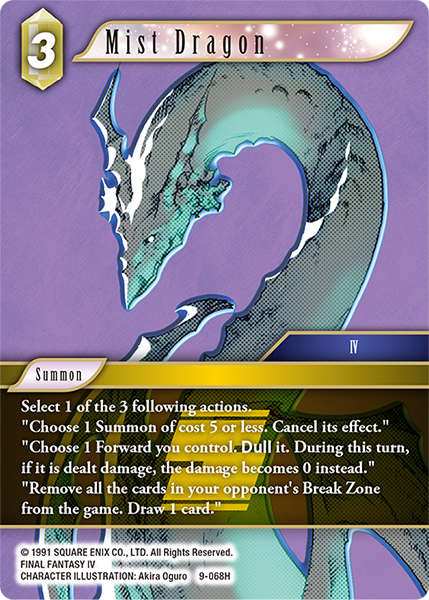
While I think Role Compression can take on many different forms, I would boil it down to this: “optimizing the strategy of your deck, while retaining as many tools as possible to cover its weaknesses “. Now, the key part of this definition is “as many tools as possible”. If you remove that phrase, this definition simply covers…deck building generally. However, that phrase implies that it isn’t enough to optimizing the strategy of our deck but to go further by preventing opponents from taking advantage of our strategy. After all, our goal is to beat our opponent. That usually means by successfully executing the strategy of our deck.
However, there is a big problem in that idea. Our opponent would prefer that not to happen :). From their perspective, and rather obviously, our opponent’s ability to win the game diminishes if we execute our decks strategy completely. So, part of the core play loop of TCG’s is the counter attacking/strategy to execute your own game plan while limiting the effectiveness of your opponents. Additionally, since we don’t know what 50 (err 58) cards our opponent will play, we have to be ready to counter a multitude of strategies. With so many combinations and permutations of decks you can play against, it becomes impossible to toolbox for all of them. It is within this context that the idea of role compression is born, and its importance elevated.
What are you compressing?
Up to this point, we have talked about Role Compression in the abstract. In most ways, what I have said up to this point holds true for most TCGs. At the end of the day, all card games have finite resources and deploying those resources is the generic gameplay mechanic we all suffer to master. So, lets drive into FFTCG a bit and see if we can further expand our horizons.
Each card is designed by the game creators to have a certain “role” to fill during your match. These roles are used all the time by players to describe a cards effect to others such as “draw engine”, “removal”, or “beat stick”. etc… We call these roles because most cards have a subset of functions it is intended to fill and no one card can fill them all. They have their “role” to play to steal a phrase.
Now, in FFTCG, there are a lot of roles, and I am going to list all of the ones I think about when I build decks. Please note, that some of these could be combined into more aggregate roles or split out to be more granular. This list is my best representation of roles in FFTCG and could vary by player. So, lets take look at each role and some examples.
Value Engine
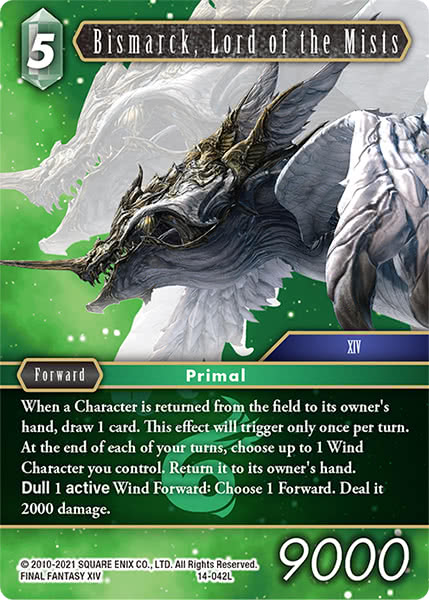
Defined as a card that contributes primary to the overall economy of your deck. IE. helps produce more CP. Bismarck is an excellent example. Having Bismarck on the field generates you an additional 4CP every turn with the extra card draws along with returning a card to hand. You almost always end the turn with the same or more CP than you started with. A textbook value engine. His second ability is actually role compression, but I like Bismarck and I get to break the rules a little every once in a while ;). Note, our own @strategicgamer covers Value Engines in more detail in these articles. How to Win: Intro into Value Engine Forwards and How to Win: Part 2 – Meta Value Engine Forwards
Beat Stick
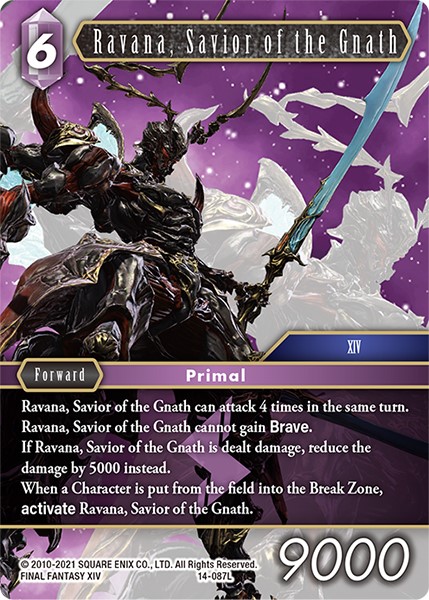
Everyone’s favorite card type and usually the worst cards in the deck, this card’s job is to push damage to the opponent or force good trades in combat. Ravana is a great example of a beat stick and a bad card. Most beat sticks generate no value and are their primarily for combat. Their text is enticing but they often simply lack the impact in a modern FFTCG game. Too many hours have been spent trying to make “Ravana Happen”.
Combo Piece
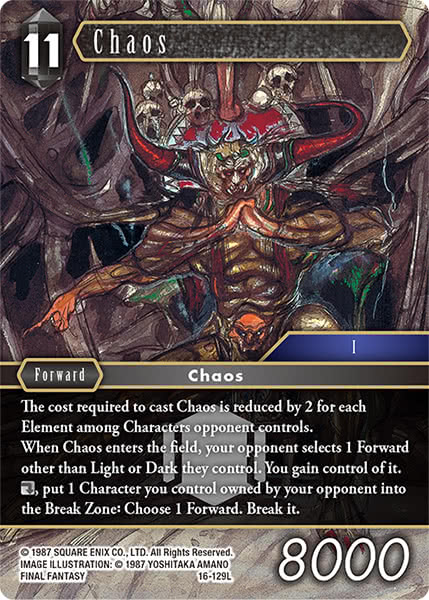
A card that is required to execute a certain combo in your deck. Usually as part of a package in your deck. Chaos comes to mind as a good case for a combo piece. He isn’t the best card on his own but when paired with Ark, can become meta warping and dominate force. You don’t run one without the other…….for now.
Synergy Card
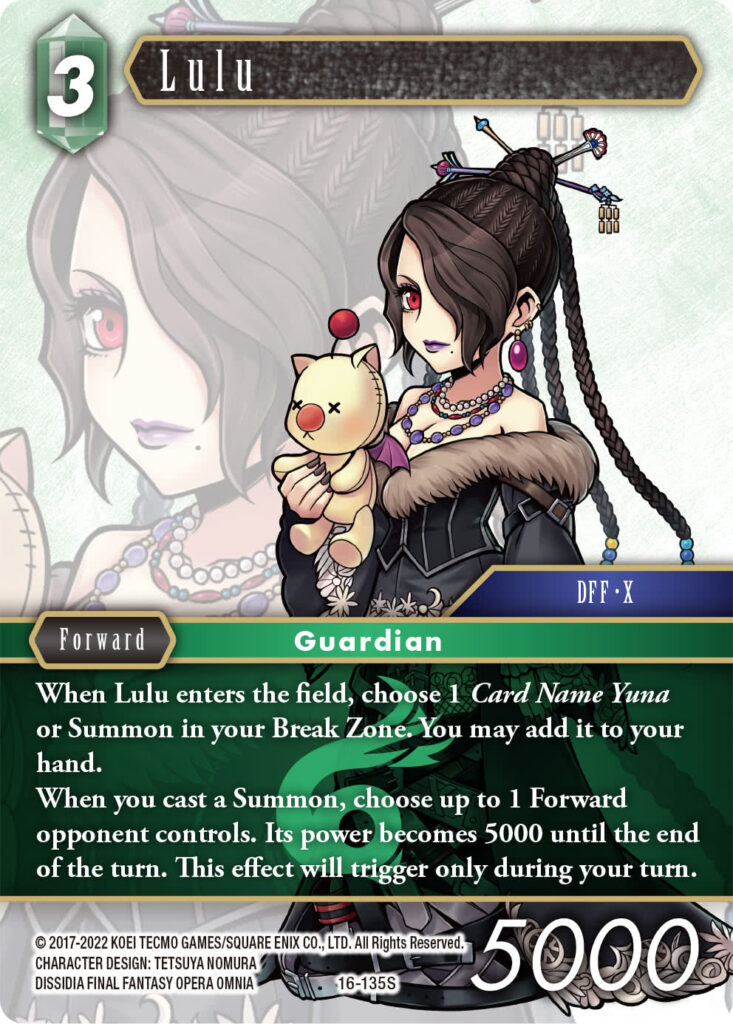
A card that is highly synergist with the overall strategy of your deck but isn’t reliant on a particular other card. In this case, Lulu is an excellent example in Storm Decks. The card has no storm call outs explicitly, but its ability to compliment storms core strategy by recurring summons to generate casts is unparalleled. Storm decks would run more they if could.
Removal

Card design to remove deployed resources from the board. Odin is clear choice for this category that is by far the easiest to define. Since O13, he does (or should) show up in all Lightning X decks. His role is clear. Remove the biggest threat on the board and hopefully burst along the way.
Consistency Piece
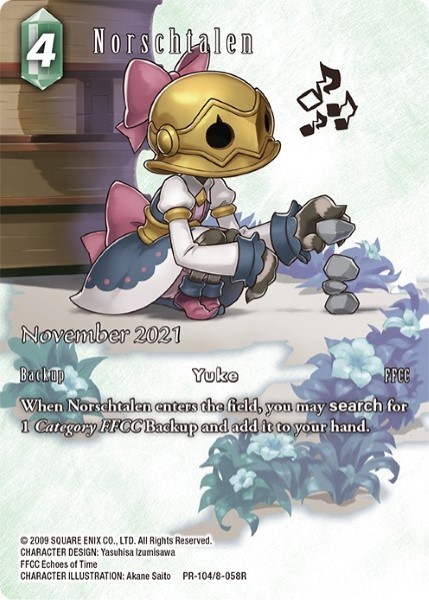
Card designed to improve the consistency of our strategy such as searchers. Norschtalen is the gold standard for backup consistency and set the bar in Opus 8. Nothing makes a deck more consistency than getting backups on time and on curve. Check out more from our article on backups and how they impact your deck. Let’s talk CP: Part 5 – Hyper Charge your Deck
Disruption
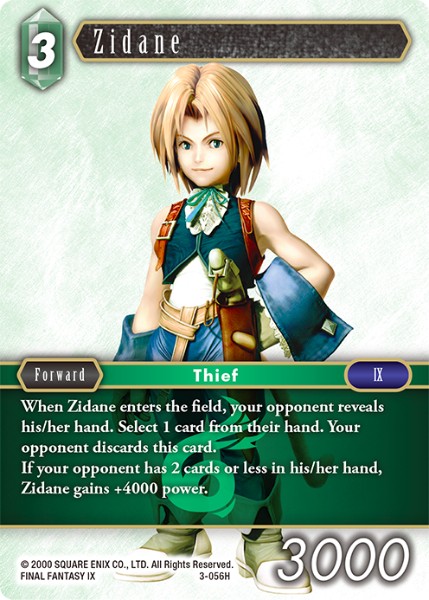
These cards are designed to interactive with your opponent’s strategy and are as close to “counters” in theory as FFTCG offers. 3CP Zidane was one of the early popular cards that fit the disruption bill. The ability to curate your opponent’s hand was very important when decks were slower, with less power cards. The card was a menace for a long time until it was power crept out of the meta but decks simply getting too many high quality cards in its 50 card stack.
Protection

Protection cards are designed to counteract other roles card from your opponent through effect nullification. Titan was the one of the originals and one of the few that isn’t actually on a card that is more compressive. His ability to break breakage was important to keep key cards on the field, in the right moment.
Deck Manipulation
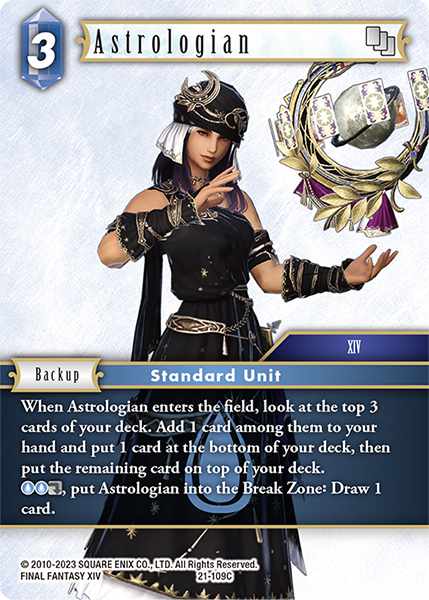
One of the rarest in the game, this role encompasses manipulating your’s or your opponent’s deck directly. These are handy to allow a player to either reduce the impact of their opponents draws or attempt to stack their deck with more favorable outcomes. Astrologian and Seymour are great examples of this effect along with LB Tidus. All allow us to control the top card of our deck or our opponents.
Honestly, each of these roles could warrant its own article. There is much more to say about them individually, but we kept it brief. There are obviously 100s per role here but i tried to choose one that fit their roles very plainly.
Building with Roles in Mind
This really gets to the core issue of this article and one I hope brings the point home. Building with roles in mind is KEY to building a viable competitive deck. It is up to the player to decide how much of each role, if any, they need and how they will go about implementing those roles into their strategy. This creates a tension or tug of war for you to consider when deck building. As a general rule, the more roles you can fit into your deck, the stronger it will be providing that you do not weaken your core strategy. Too much value, you will run out of deck before you defeat your opponent.(Mono Water anyone?) Too little value, and we run out of gas before we can kill our opponent. The balance is delicate, and it takes experimentation to get that balance right.
Now, let’s take a look at a recent nationals deck and see how the player was able to use role compression to maximize their deck. We will use The Crystal Bearer’s own Adam Kassar’s deck as an example. There are better decks we could use but this one will do. (I owe him for this one, see his other deck’s name to understand)
https://materiahunter.com/decks/i5yzu6pggp412Vk2R0ZR

Adam’s deck was a unique take on Water/Fire that incorporates the Refia/Warrior of Light package. The idea of the deck was to stick an early Refia and use her auto ability to handle aggro or use the extra CP to extend his turn and pull ahead for a mid/late game win. This package is in stark contrast to heavier Warrior builds or summon based builds that rely on a lot of bursts. This is a midrange deck, designed to win in the mid/late game while providing some aggro tools to allow the deck to be more aggressive early.
Let’s take some time and review 3 cards in the list and attempt to understand Adam’s thought process to why he chose them for his list.
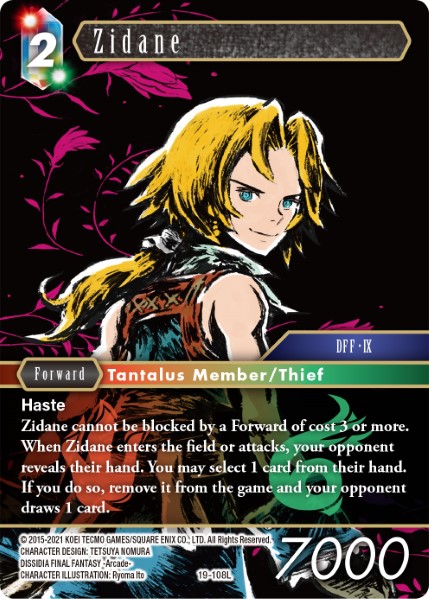
First up is Wind/Fire Zidane. A staple in 3-4 element builds, his primary role is disruption. His ability to curate your opponents hand is unparalleled and he does a great job at frustrating opponents. He does a good job at not only curating your opponents hand, he also does a good job of putting your opponent on the spot. He forces decisions which can work to your advantage in the right moment. Now, disruption isn’t the only role he plays. He also fulfills the role of beat stick, deck manipulation, and combo piece. His unblock-able ability and low cost make him a prime beat stick that you don’t mind losing to EX. His printed cost combo’s with Edgar allowing him to be played both early and at instance speed, if necessary. Finally, a bit lesser known, he is a pretty good mill card often accelerating your opponent by 1-2 turns through the game since they draw off of the RFG. He is an excellent representation of roll compression of a disruptor compared to his Opus 3 predecessor.
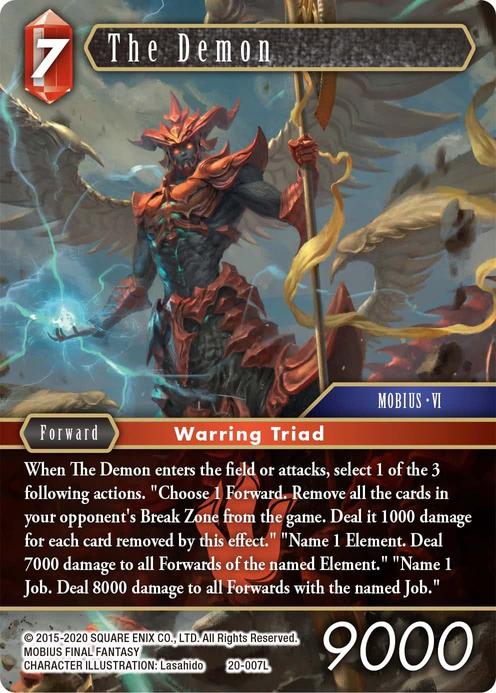
Next up, we have the Demon from Opus 20. The Demon is a much more obvious form of role compression because it has multiple, distinct effects as part of its modal text. Each effect is designed to allow the card to be more flexible given the matchup at hand. Let’s review his abilities starting from the top. His first ability of “RFG all cards and deal 1000 for each card removed” is a power ability that has multiple roles by itself. It serves as both disruption and removal in one fell swoop. This provides as excellent counter punch to recursion heavy decks. His final two effects are similar, with different targets. Mass removal is a more protected class of removal in FFTCG. You can learn more about my thoughts on them Let’s Talk CP #4: Breaking the CP Limits here. You can draw some distinction of previous cards in Susano, Lord of the Revel and Philia who no longer see play currently.
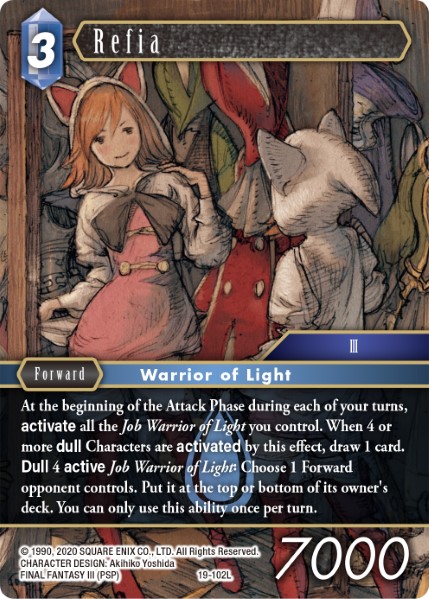
The final card I would like to talk about is Refia, the centerpiece of the deck. She is a build around card that fulfills so many roles at once that I was surprised when she was printed. Her wall of text is the envy of so many other cards like her and the disdain of others who get tired of seeing Refia for the 9th time in a game. She fulfills Value Engine, Removal, Disruption, Deck Manipulation, Synergy Piece, and Combo Piece all at once. A powerful combination of roles (keep wanting to say quirks, MHA fans anyone?), that propelled her to the top of meta game glory. Her activate and draw ability is a CP positive play at 4 or more backups and her removal ability is elite at dealing with pesky threats. It comes with the additional effect of disrupting heavy recursion strategies. She does so much in one card and when paired with her, in my opinion, better combo piece in Faris, she is a force.
Wrap up
There is so much more that could be said about Role Compression but I will stop here. Learning to maximize your decks ability to answer questions is one of the core challenges of FFTCG deck building. By optimizing your decks ability to cover the roles and effects you need, you can build a successful and competitive deck to propel you to new heights. Perhaps I can write more in depth, in the future but for now, thank you to everyone who took the time to read this and I hope you enjoy your well deserved rest this offseason. You will hear from me again before the start of the 2025 competitive circuit as we have more articles lined up.
Until then, i return to my den of hiber……………………..
Oh Yea, can’t forget our spoiler

I am pleased to present to you Mateus (XII RW) from Opus 24. Mateus is an ice summon that has two modes. Hmmm, its almost like it a card that handles role compression in Ice? JK, this is what inspired me to write the articles since we already have to summons that have both effects on them in Ice, for 2CP.
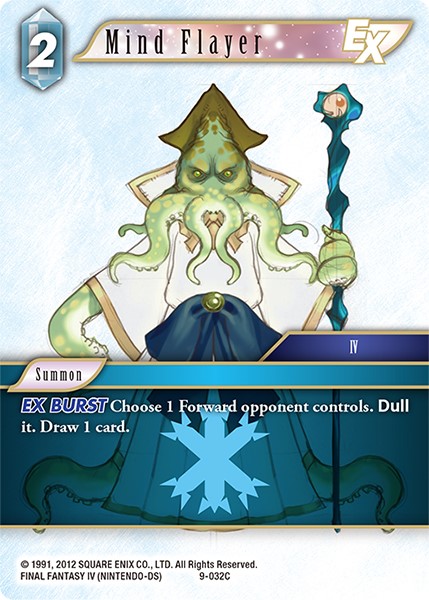
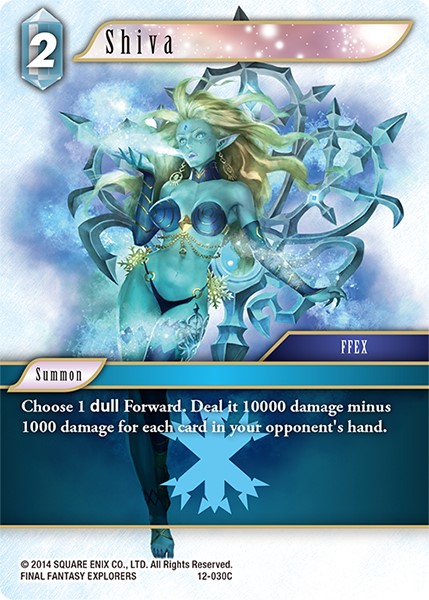
Mateus is a near perfect example of role compression. It explicitly combines the effect of these two cards into a single card. EX burst and all. Yes, I know Shiva is damage based but the outcome is the same.
As to the card itself, its fine. Ice is in such a bad place that I don’t expect it to see play. Hopefully the new Genesis can breathe some life into the element. Ice needs better value engines, consistency engines, removal, and just about all other roles aside from disruption that I don’t know if a single card can lift it from the basement. Let’s hope it sees a resurgent soon. It’s getting too hot in here and I prefer to keep my clothes on 🙂
After that horrific dad joke……….
I will return to my den of hibernation.

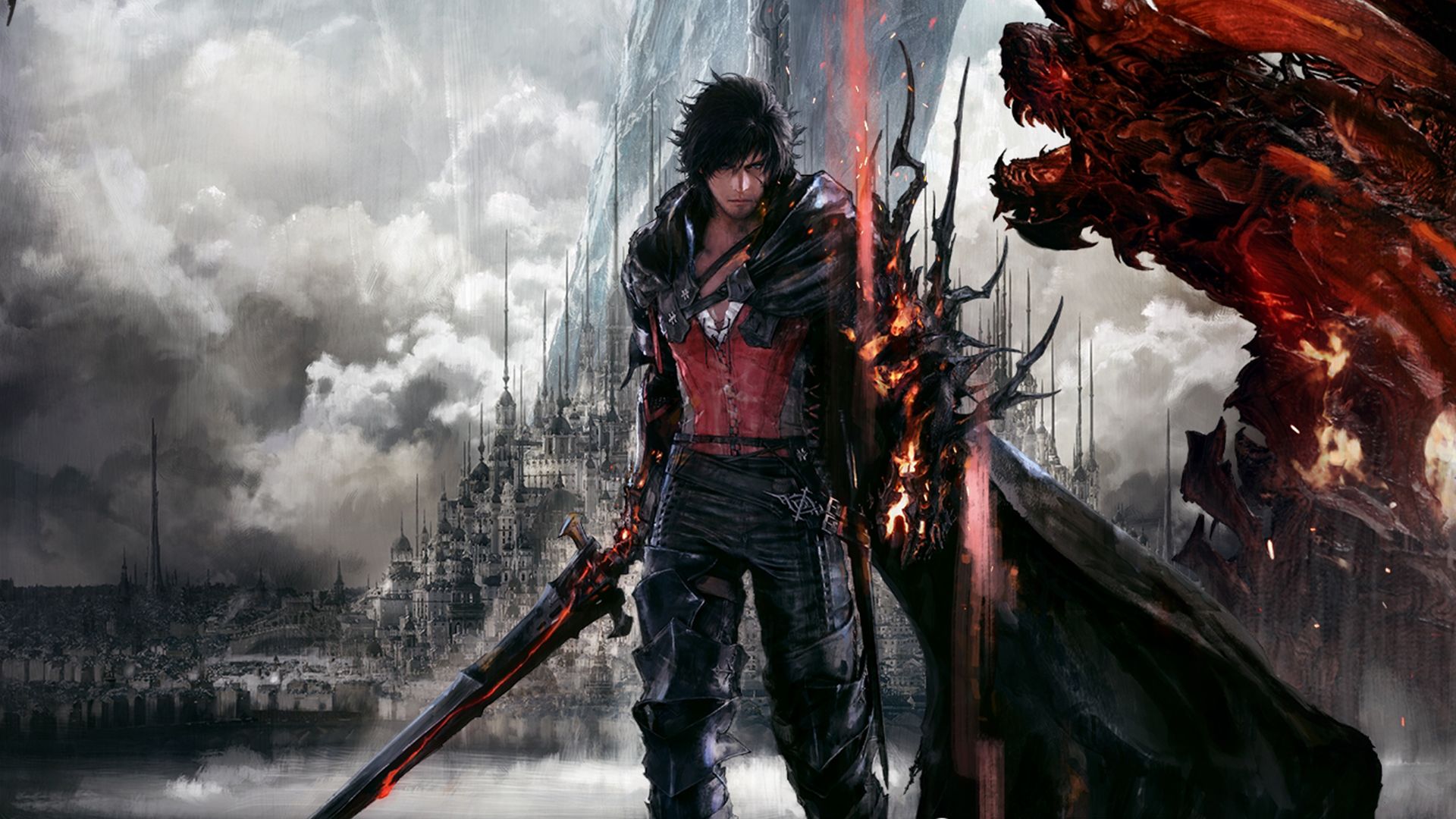



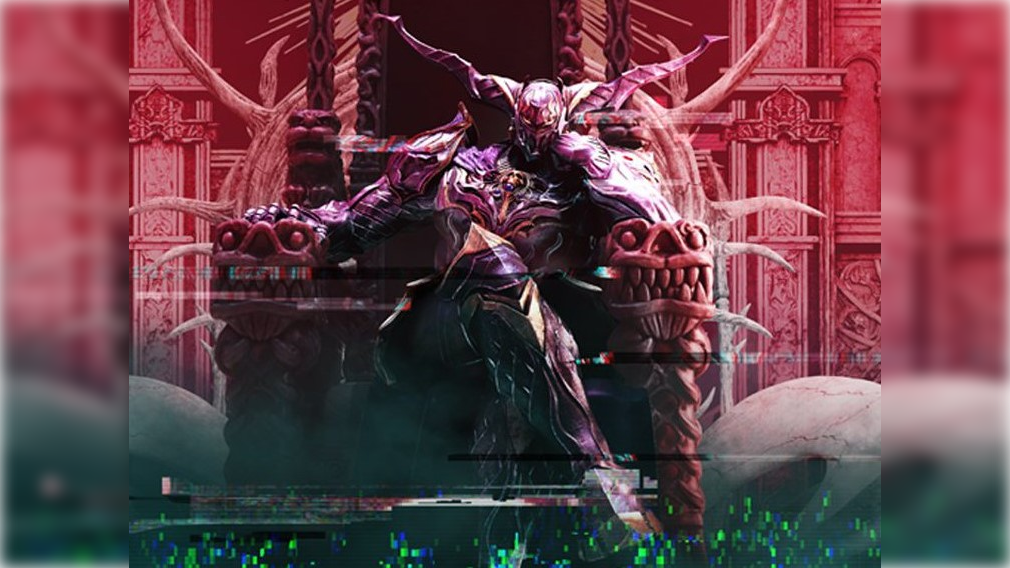
Leave a Reply